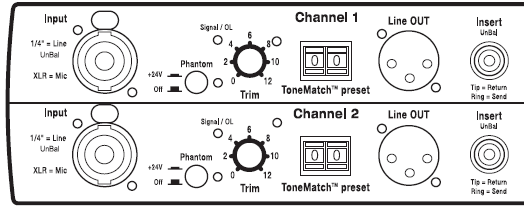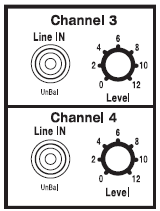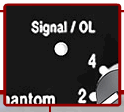Difference between revisions of "L1® Model I"
(toc in a table with link to Bose site under image) |
|||
| Line 1: | Line 1: | ||
{{Model I}} | {{Model I}} | ||
| − | + | <table><tr><td>__TOC__</td> | |
| + | <td> | ||
| + | <html><a href="http://www.bose.com/controller?event=VIEW_STATIC_PAGE_EVENT&url=/musicians/products/l1_model1/product_l1_m1_1b1.jsp"><img src="http://www.bose.com/images/musicians/product_selection/l1_m1_systems.gif" border="0" alt="click to go to official site for the L1™ Model I"></a></html> | ||
Announced March 29, 2007 | Announced March 29, 2007 | ||
| + | </td> | ||
| + | </tr> | ||
| + | </table> | ||
== Documentation == | == Documentation == | ||
Revision as of 03:57, 31 March 2007
Documentation
Input Section
Channels 1 & 2
Channels 3 & 4
Output Section
What do the LEDs mean?
How to Interpret the LEDs Near the Channel 1 and Channel 2 Inputs
There are two LEDs on the PS1 Power Stand (Classic) / Model I labelled Signal OL -- one for Channel 1 and another for Channel 2.
The LEDs indicate when the signal level in the input preamplifier reaches certain important thresholds. The trim controls located near the LEDs adjusts the amount of gain in the preamplifier.
- The LEDs turn from off → green when the signal level exceeds a small amount.
- The LEDs turn from green → red when at the signal reaches a level that's about 10 dB below a level that would clip the preamp and cause objectionable distortion.
When the LED is off (but you are playing an instrument you think is connected to the PS1 or singing/talking into a microphone you think is connected): Increase the level of the trim control. If the LED still does not turn green or red, check instrument/mic and cables to the PS1.
When you see green only: This indicates that there's some signal in the channel but not enough. While singing or playing as loud as you plan to in the performance, increase the trim level until the LED is only flickering red. This is the optimal gain.
When you see red most of the time: Decrease the trim level until you see only flickering red. This is the optimal gain.




